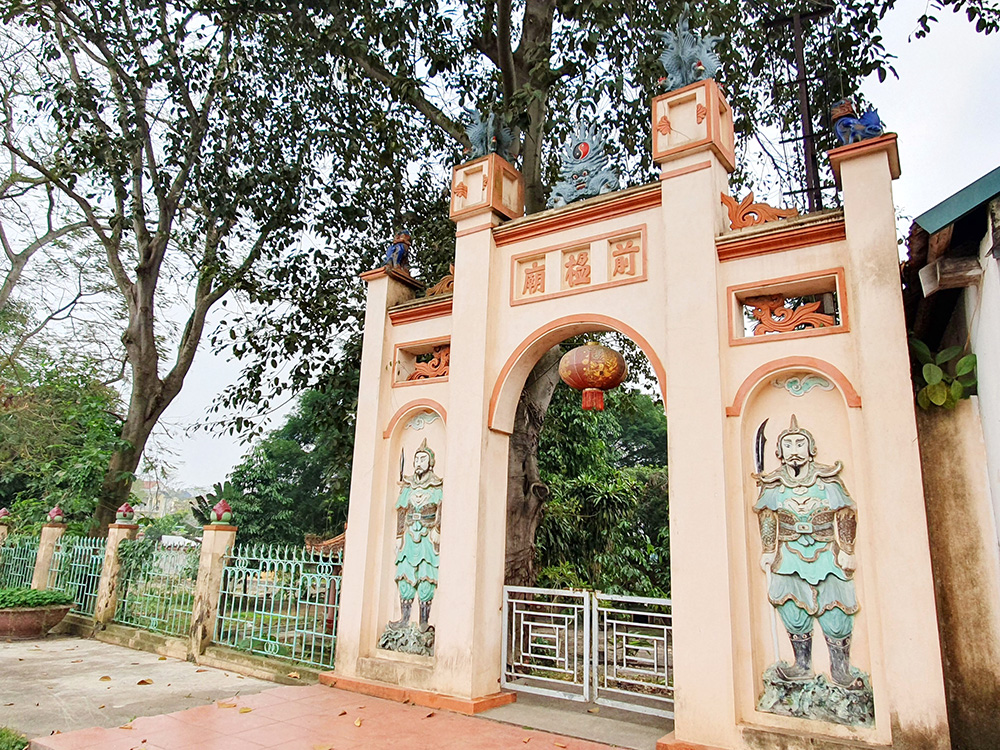
Temple relic in Son Vi.
Ancient Lu Tree - Witness of history
The Temple Ward relic, whose Chinese name is “Tien Doanh Mieu”, has been one of the three garrison areas of “Vay village’s citadel” (the name of the ancient Son Vi village) since ancient times, established by the 18th Hung King and his generals to fight and defeat the Thuc invaders, keeping the Van Lang country peaceful. The central area in the middle of the village - today is “Dai Than Mieu” (Forbidden Forest); the left army area in the West - today is “Tam Quan Temple”, the vanguard area in the Northwest of the village, today is “Tien Doanh Mieu”, i.e. Temple Ward.
The temples are all 1km apart, forming a tripod, three corners surrounding Son Vi village. For generations, the people of Son Vi village have paid attention to protecting, preserving, embellishing, worshiping the temples on every traditional New Year's holiday and regularly bringing offerings to burn incense to pray for blessings, fortune, wealth, and peace.
Phuong Temple is located at the foot of Go Vuon Sau - Son Vi archaeological site, ranked as a national monument. This is a relatively flat, spacious land, in the middle there is a small temple with ancient, mossy patterns. One special thing is that around the temple there are up to five tall ancient Lu trees with an average root diameter of 0.7m, 15-20m high and many young Lu trees. Standing from below looking up, each ancient Lu tree is like a towering tower with a straight trunk and green foliage covering the sky. The sky under the canopy of trees seems to shrink, the space is fresh and strangely peaceful.
Mr. Bui Ngoc Que - Member of the Vietnam Historical Science Association, a native of Son Vi land said: “The five ancient Lu trees at Mieu Phuong all have the appearance of thousands of years old. It is not known exactly when the trees were born, but the elders over 100 years old in the village all confirmed that since they were born and grew up, they have seen five Lu trees that tall, majestically located on the sacred land. The Lu fruit has the shape and taste of a long fruit, when ripe it is yellow and sour, so when we were boys, we often climbed trees to catch birds and pick fruit”.
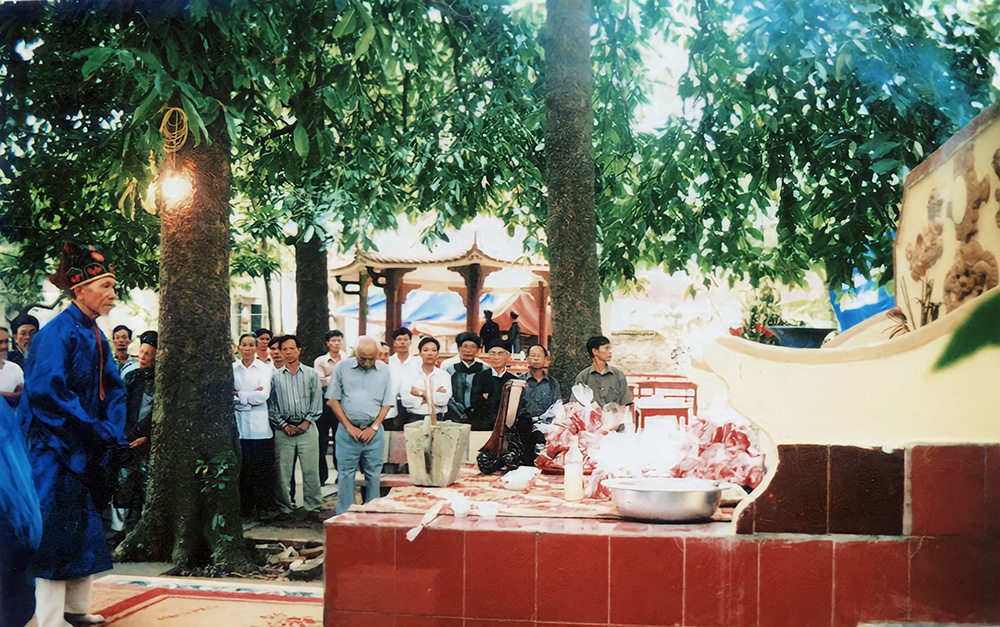
Ceremony scene at Phuong Temple (Photo provided by Mr. Bui Ngoc Que).
Covering the temple, for centuries, five ancient Lu trees have clung tightly to the land of Son Vi to grow up, steadfast and proud as a witness to history. The five Lu trees have witnessed countless village festivals, communal house festivals, and many ups and downs of the ancient land. Under the large canopy of the tree, in the past, people gathered to enjoy the cool summer afternoons, and the childhood of chasing and climbing trees to pick fruit of many generations of people in the village.
In the temple's campus of more than 1 hectare, around the five ancient Lu trees, there are many green Lu trees from one to several meters high. The sacred tree grows on sacred land, so people in some places in Lam Thao who want to ask for Lu trees to plant all come to the Temple to burn incense, respectfully offer prayers to the gods, then cut the trees to plant and take good care of them.
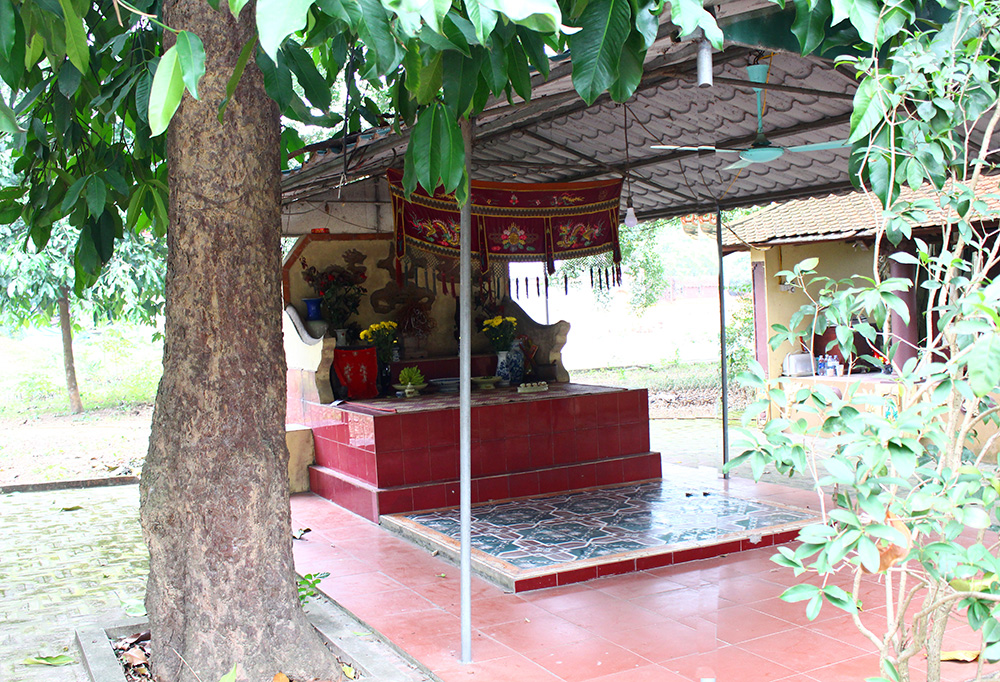
The small ancient temple is located under the Lu trees.
Attached for generations and until now in their consciousness, the people of Son Vi village still consider the Lu trees as something very sacred, inseparable from their homeland. Along with the Lu trees, around the temple today there are also banyan trees and ancient ficus trees that are green all year round. The green tree complex in the Temple Ward grows tall and spreads its canopy widely like the indomitable spirit of heroes and warriors from thousands of years ago, standing to protect the villagers from storms and winds, fighting against disasters, creating for the Temple Ward a beautiful landscape with a solemn, quiet and mysterious look.
Sacred land
Mr. Bui Dong Xuan (86 years old) - Head of the Celebration Committee of Son Vi communal house, the person directly managing and looking after the Temple Ward, recounted: According to the genealogy of Son Vi communal house, the Temple Ward area is the place where King Hung's soldiers marched to fight against the Thuc invaders in the Northwest and also witnessed three bloody battles when the Thuc invaders attacked the garrison. According to the deep spiritual beliefs of the villagers, every inch of Son Vi homeland in general and the Temple Ward area in particular has been soaked with the blood and bones of soldiers since ancient times. Every branch and blade of grass here contains the souls of generals and soldiers in the dawn of Van Lang. Therefore, the Temple Ward and the ancient Lu trees are extremely sacred, many legendary legends with spiritual elements about the Temple Ward are still passed down to this day, so no one dares to encroach on this land.
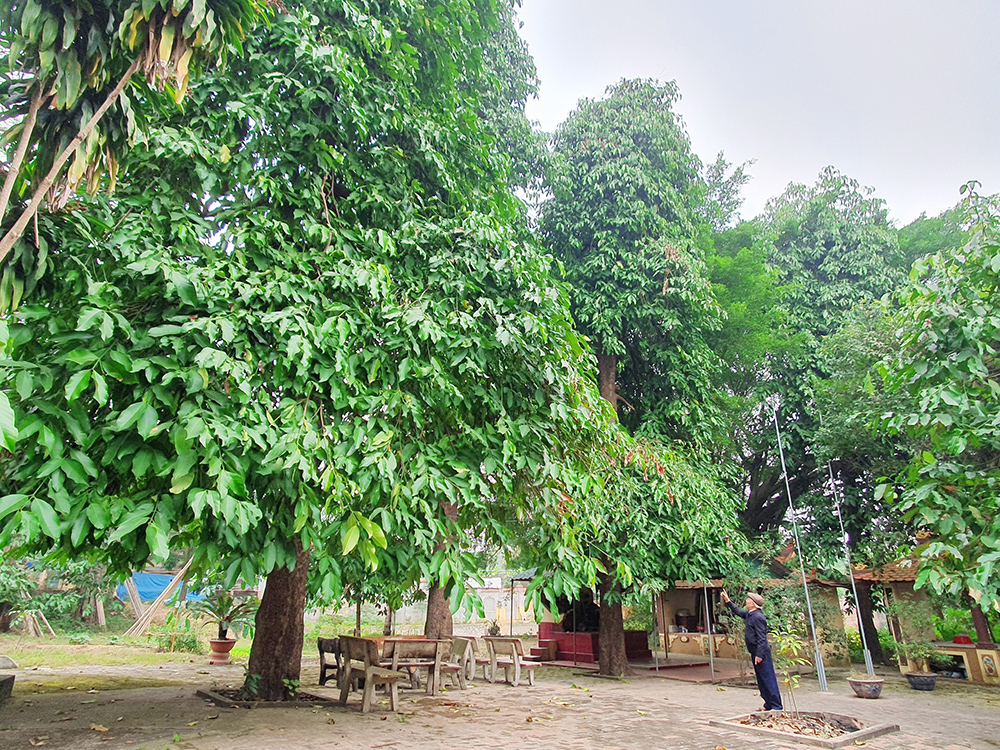
The tall ancient Lu trees cast shade over the temple.
Every year, on the 8th day of the first lunar month, Son Vi villagers hold the Temple Festival with a special ritual called "Wind Offering to the Army". This ritual symbolizes the villagers providing food and provisions for King Hung's soldiers on their march to fight the enemy. Because they did not have time to cook the food, they had to eat rice balls and raw meat brought along.
Son Vi village still maintains the custom of dividing into 18 hamlets, each hamlet brings to the Ward Temple offerings including: A tray of sticky rice and a live black pig. Sticky rice is made from cooked sticky rice, then put into a wooden mold, pressed tightly, as big as a cinder brick, placed on racks assembled from tree branches, in front of the temple.
When the guards carried the jet-black pig, the Head of the Temple came out to look at the pigs brought for a while, then chose a pig that met the required standards: jet-black fur, snout, ears, forehead, hooves, and feet all jet-black, without blemish and the fattest. Then, the Head of the Temple took a bamboo stick with a hammer-shaped root and hit the head of the chosen pig, symbolizing that the gods had agreed to accept the offering and allowed the pig to be slaughtered for the sacrifice on the temple pedestal.
Other pigs for worship were also brought to the ancient well next to Phuong Temple to be slaughtered on the spot. The raw pork was placed in baskets, lined with forest leaves underneath, then placed in baskets, suspended from all the branches of the Lu tree surrounding the temple. The villagers began to organize the "Wind worship ceremony" at the temple very solemnly and respectfully. Everyone was allowed to stand wherever they wanted to worship, clasping their hands and praying to all four sides of the temple, with prayers expressing their respect and gratitude to the generals of the Hung King era, praying for the supreme deities to bless the country, the people's safety, the people's health, prosperity, favorable weather, good crops, and every family's well-being and happiness.
After the ceremony at the Ward Temple, the villagers bring home sticky rice and meat, first to divide among the families with relatives who are soldiers, wounded soldiers, and martyrs' families, then to give to the elderly, the rest will be used to organize a festival for the whole village to gather and eat happily.
This is not only an opportunity for generations to review the historical and cultural traditions of Son Vi village, tell stories about the legends and sacred sites of the Communal House and the Temples, but also for villagers to advise each other to make efforts to protect, preserve, embellish and promote the value of historical and cultural relics, contributing to the construction and protection of the homeland, worthy of the great merits left by the saints and ancestors.
Source



![[Photo] Prime Minister Pham Minh Chinh chairs the first meeting of the Central Steering Committee on housing policy and real estate market](https://vphoto.vietnam.vn/thumb/1200x675/vietnam/resource/IMAGE/2025/9/22/c0f42b88c6284975b4bcfcf5b17656e7)




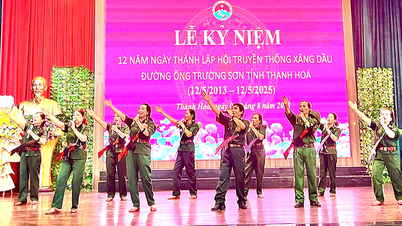

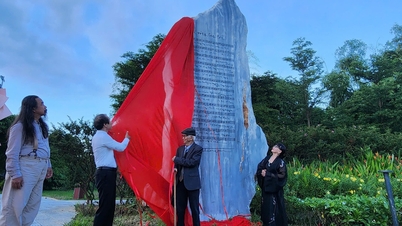



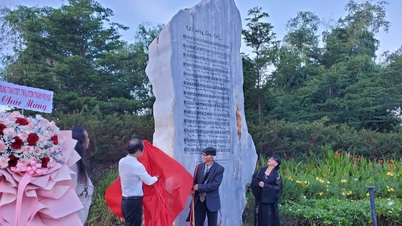









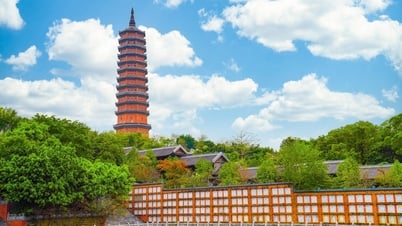

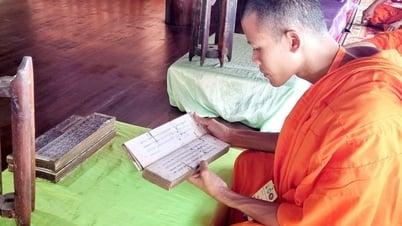

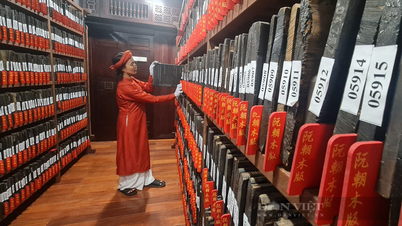
![[Photo] General Secretary To Lam presents the First Class Labor Medal to the Vietnam National Energy and Industry Group](https://vphoto.vietnam.vn/thumb/1200x675/vietnam/resource/IMAGE/2025/9/21/0ad2d50e1c274a55a3736500c5f262e5)

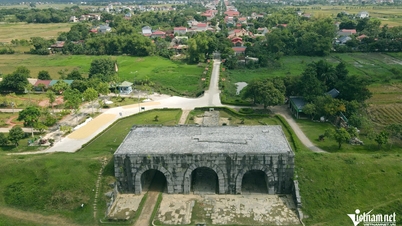




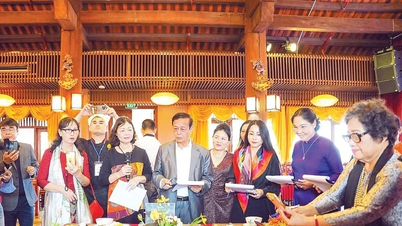


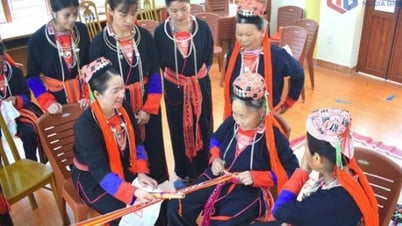




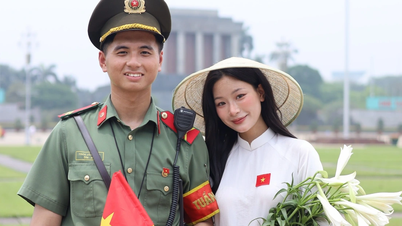

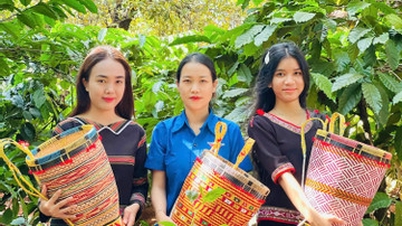














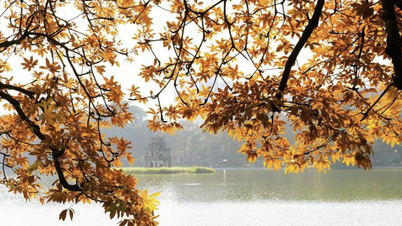




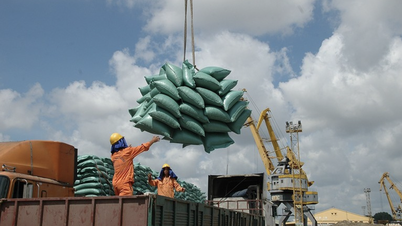












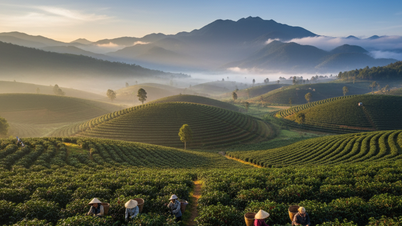

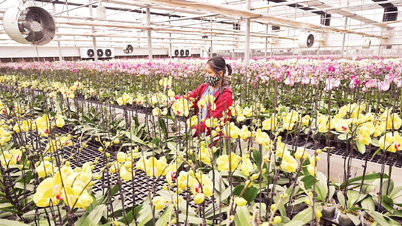








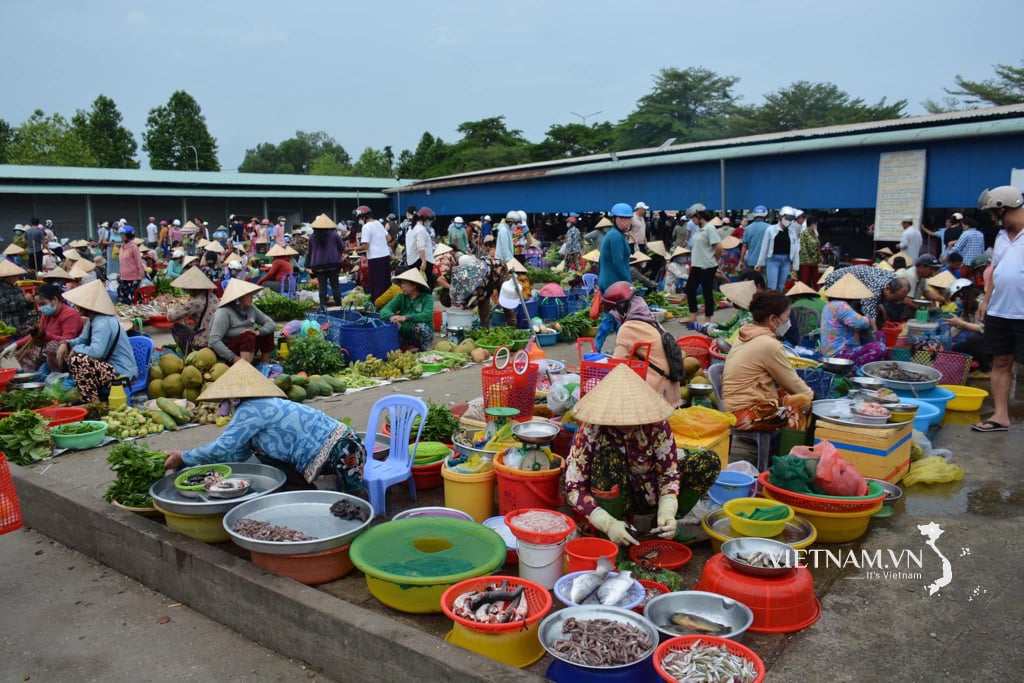
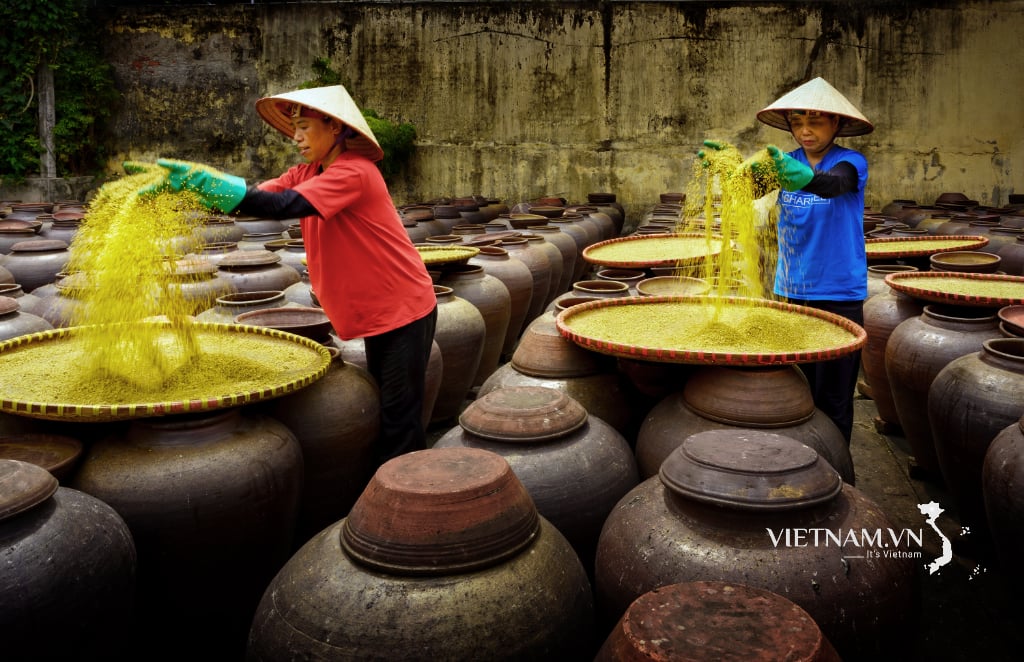


Comment (0)